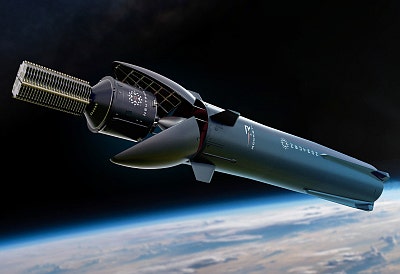Rocket Lab completes first static fire test of new more powerful rocket engine

Neutron first stage deploying second stage with satellite
Rocket Lab yesterday announced it has successfully completed the first static fire test of its new Archimedies rocket engine, designed to be used on its new larger Neutron rocket scheduled for launch next year.
Archimedes performed well and ticked off several key test objectives, including reaching 102% power, anchoring the engine’s design ahead of Neutron’s first flight scheduled for mid-2025 – a schedule that would make Neutron the fastest a commercially developed medium-class launch vehicle has been brought to market. With the hot fire complete and full qualification campaign now underway, the Rocket Lab team is moving into full production of flight engines.
The design of Neuton is clever, as shown in the graphic to the right. In order to reuse as much as possible, the fairing encloses both the payload and upper stage. Before stage separation, the fairing will open, allowing the upper stage and its payload to be deployed. Afterward it remains with the first stage, which will land vertically back at the launch site.

Neutron first stage deploying second stage with satellite
Rocket Lab yesterday announced it has successfully completed the first static fire test of its new Archimedies rocket engine, designed to be used on its new larger Neutron rocket scheduled for launch next year.
Archimedes performed well and ticked off several key test objectives, including reaching 102% power, anchoring the engine’s design ahead of Neutron’s first flight scheduled for mid-2025 – a schedule that would make Neutron the fastest a commercially developed medium-class launch vehicle has been brought to market. With the hot fire complete and full qualification campaign now underway, the Rocket Lab team is moving into full production of flight engines.
The design of Neuton is clever, as shown in the graphic to the right. In order to reuse as much as possible, the fairing encloses both the payload and upper stage. Before stage separation, the fairing will open, allowing the upper stage and its payload to be deployed. Afterward it remains with the first stage, which will land vertically back at the launch site.
